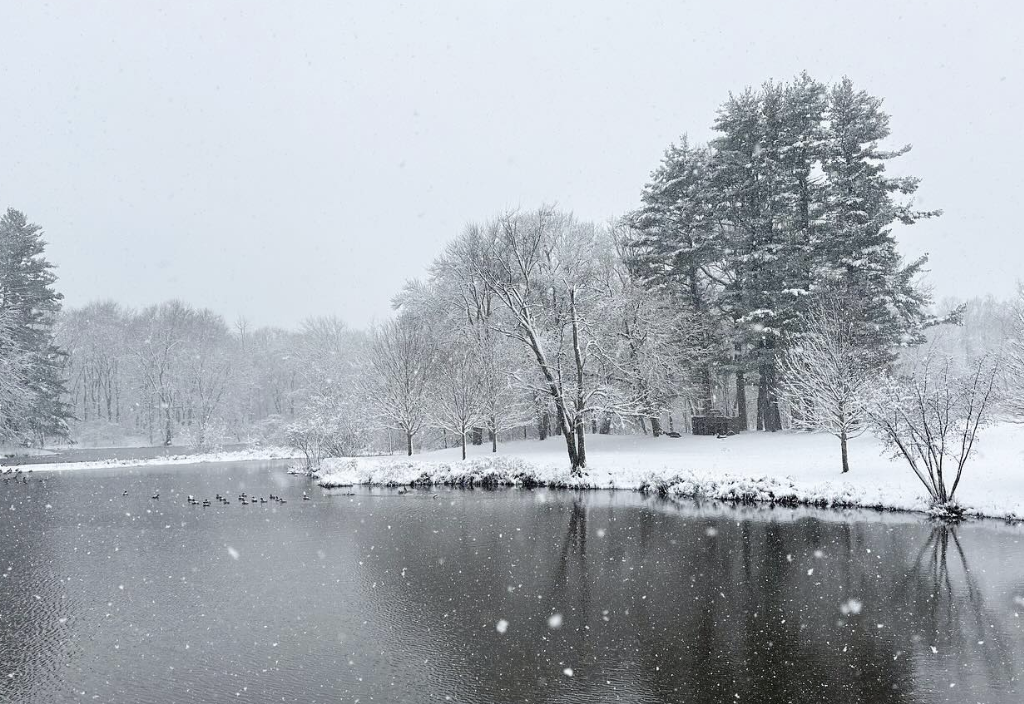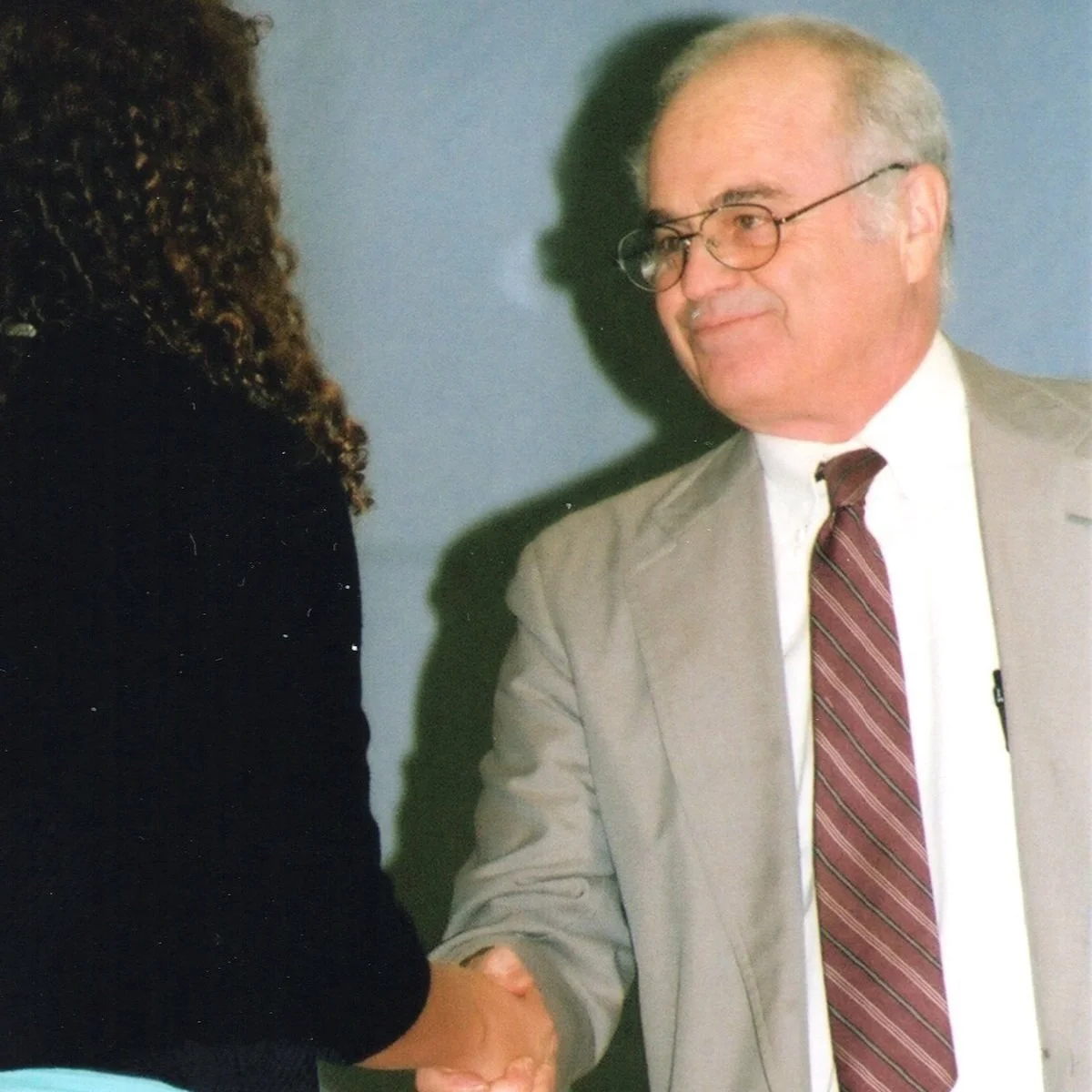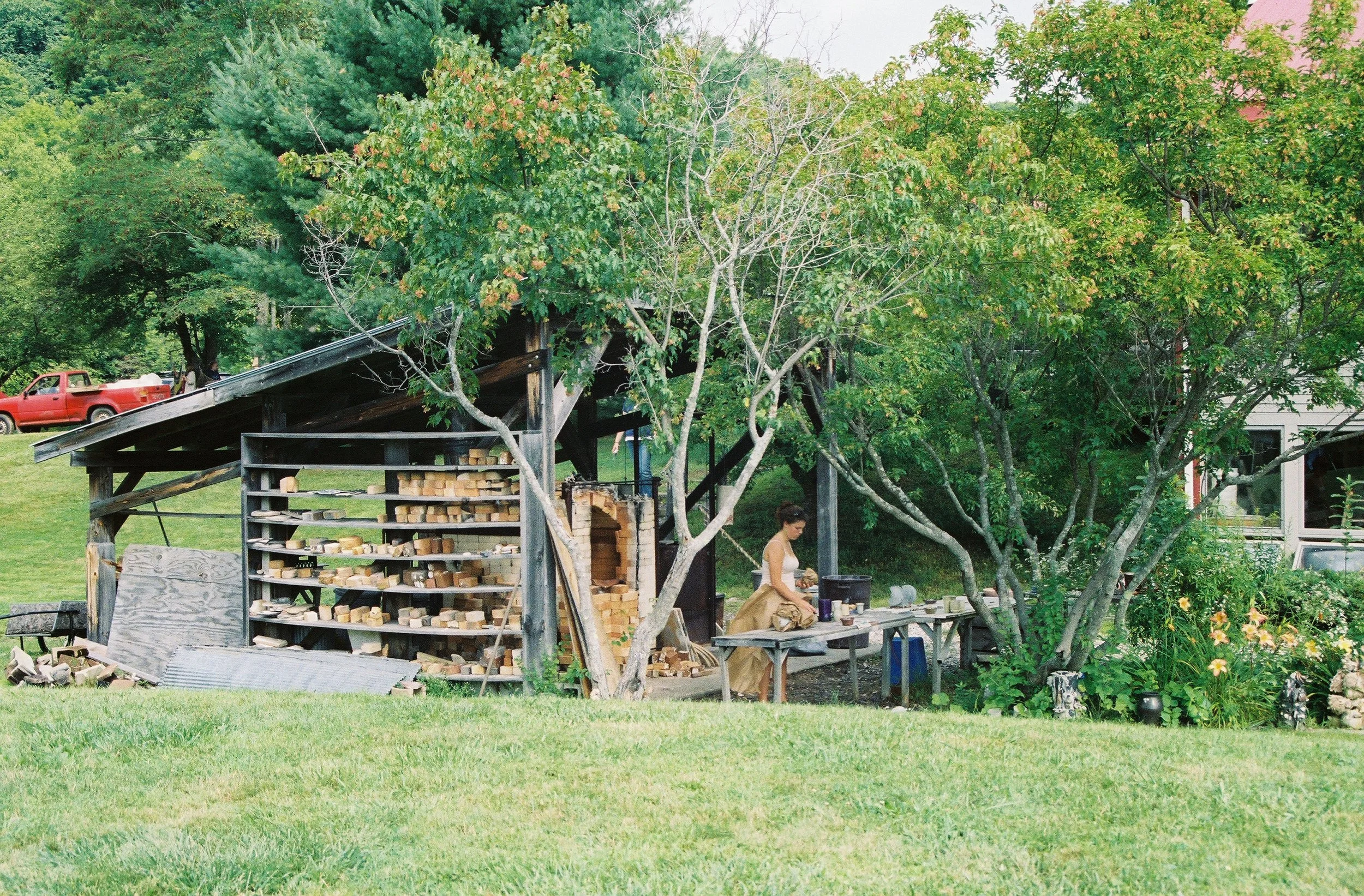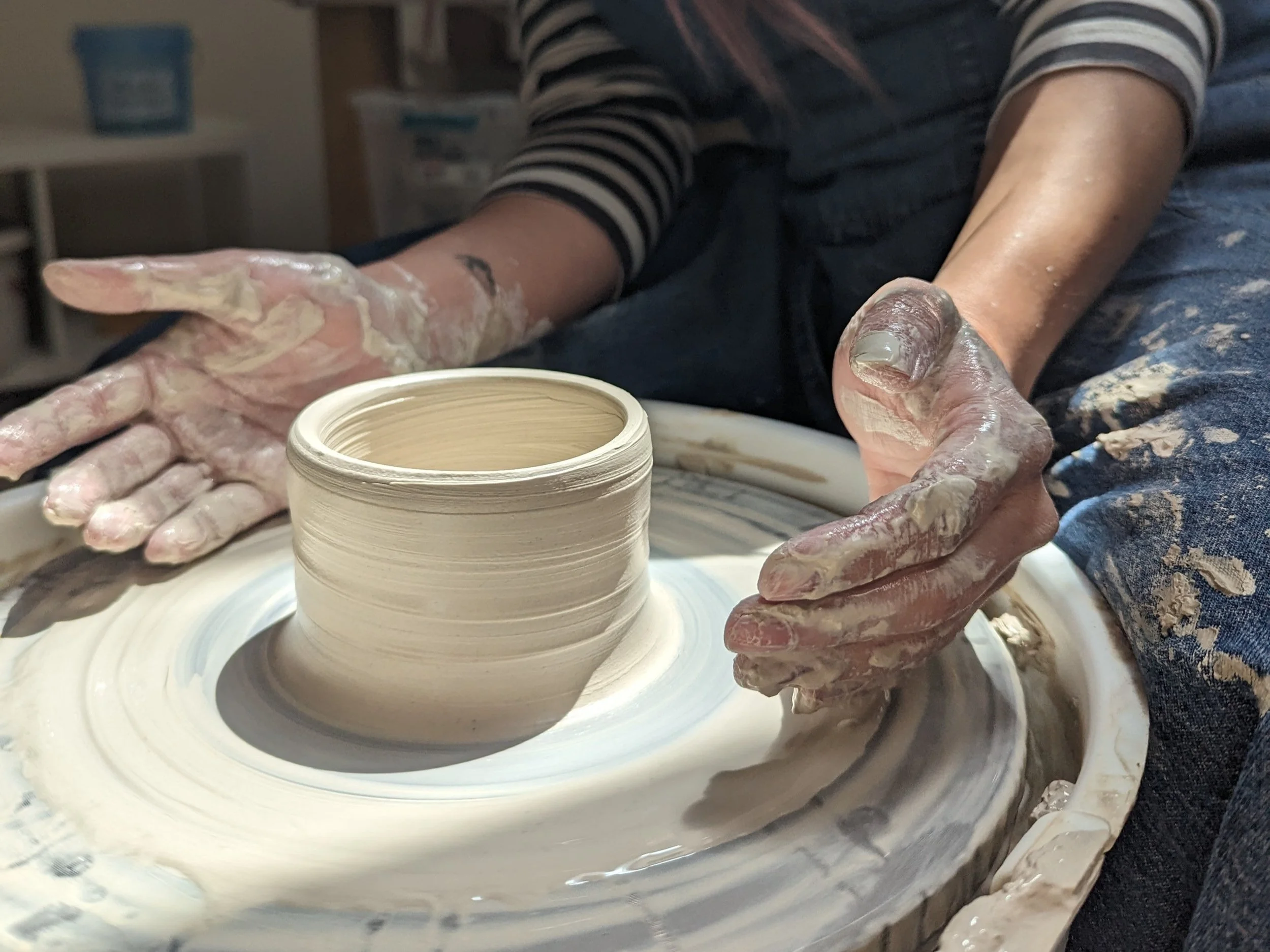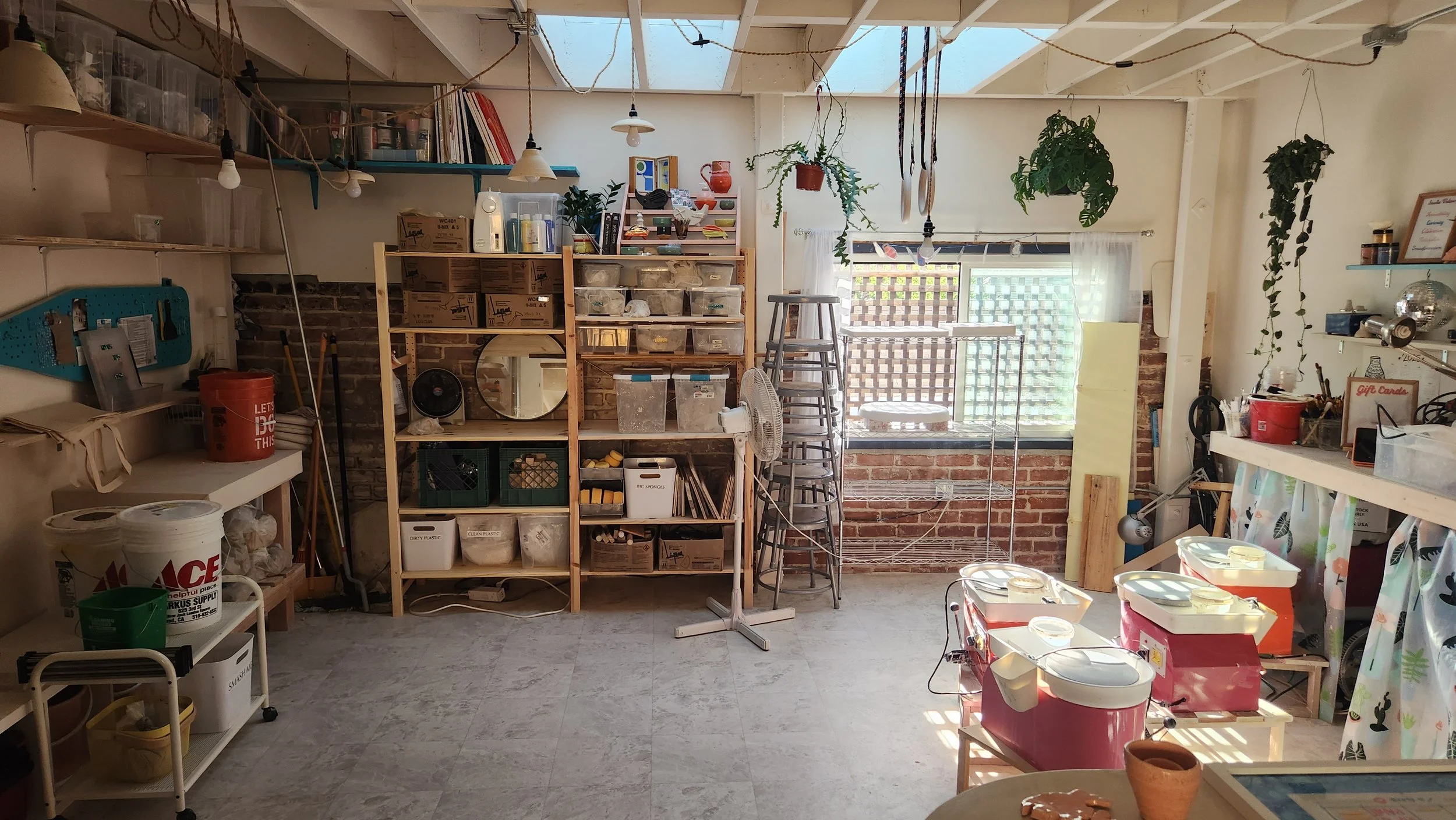“How did you get into pottery?”
A lot of Waveform visitors ask how I first got introduced to pottery. I started throwing when I was 13 - and I thought I’d share the long version here:
Snow in the meadows, from @loomischaffee’s Instagram
I remember winters in the Richmond Art Center (the RAC) in Windsor, Connecticut – watching snow flurry down out the windows, falling in sheets over the meadows where I ran with the cross country team. A lot of my memories are of time alone in the ceramics studio, weather against the windows, bare feet on the concrete floor, playing my mixed CDs on the little stereo. I still have some of those songs on my playlists in the studio at Waveform.
I lived away from home starting at 13 – in my family boarding school was not uncommon – three of my grandparents went to boarding schools, my aunts and uncles, and both of my parents.
I was young for a ninth grader, and very homesick. I was used to being in a house full of siblings and siblings’ friends, and had come from a small school, and neighborhood, where I knew everyone. At my new school, I was a shy freshman and felt positively terrified of the 5th years, or “PGs”: bulky, bearded students who stayed an extra year before college.
That first year I would microwave soup in my dorm and eat lunch in bed watching Friends. I dreaded figuring out where to sit in the crowded lunchroom and didn’t understand how people seemed to so easily already have friends. I didn’t get into the school play (devastating for someone who earnestly planned to go on Broadway – a bold aspiration seeing as I wasn’t great at dancing and had medium singing ability). I didn’t get into the painting class I wanted to be in, which was my plan B. Homesick and rejected the only clique I thought possible for me (the theater kids of course), I showed up to the Ceramics 101 class I had automatically been put into apprehensive. What was Ceramics? Was it like fiber arts? It sounded like “mechanics” and so I thought it would be sort of like shop. Now I would be overjoyed to take a shop class… but at the time I was put out.
I showed up that first day and about 16 of us sat around a cluster of folding tables where we met Mr. Rabetz, a gray haired, blue-eyed man – think Bilbo Baggins in a plaid button down, with a Brooklyn accent. He talked about clay, pottery and ceramics while we sat around sticking our fingers in the lumps of clay he had set out. I squished my hands into the red clay and it was like a scene in a movie, where all the background noise fades, the camera zooms in on the main characters and everything slows down: we fell in love. I also sat next to a person who ended up being my first friend, Aiste – a Californian who would introduce me to avocados and make me laugh till I peed.
Mr. Rabetz shaking my hand and presenting the art award my junior year
Mr. Rabetz (Walter) was also the photography teacher and the basketball coach, as well as a dorm head. His wife Marylin was the drawing teacher, and I loved them. He was an encouraging teacher, with a bit of no-nonsense intensity that I liked. He refused to center the clay for us and gave us A’s for trying and failing. I was obsessed with throwing on the wheel, wedging, recycling clay, making sculptures and experimenting.
Boarding school kept tabs on students and enforced a tightly packed schedule. There were afterschool curriculars from 3:45 – 5:30, family style sit-down dinners (where sometimes you were the waiter / clean up crew) twice a week from 6:15-7pm, study hall from 7:45-9:45 every night, and every other week there were classes on Saturdays.
I found a way to saturate this schedule with time in the studio. I spent free periods and lunches there. I would sign out of my dorm at 3:45 (the end of the school day) and head to the RAC – bringing my homework and a sandwich for dinner. I would stay until the last possible minute and then walk back to my dorm to shower and fall into bed, exhausted. We also had “work jobs” – assigned jobs that changed every two weeks. I convinced the school to have me recycle clay as my “work job” all year. I recycled 1500 lbs. a year for them – they had a 3’ x 4’ plaster bat to lay out around 100 lbs. of clay at a time. We had all kinds of clay bodies, and you can imagine that the reclaim bucket (which was a huge garbage can on wheels!) in a high school classroom had lots of weird, interesting finds. Sponges, plastic, tools and more. I didn’t mind the weird smells and graphic squelches – I found the process satisfying and soul-quieting.
Sophomore year I convinced the school that pottery was a physical enough process to count as a sport, and they agreed to let me do an independent study for the winter semester. I was a runner and had no interest in the winter sport for runners… titled “Running,” which, you guessed it, involved suiting up and running around campus in the snow, sleet and slush. No thanks.
Throwing the cup series
Junior year I threw my first series of cups, selling them at lunch and raising money for Medical Aid for Iraqi Children, a non-profit I chose to support after I read about 124 people killed in a bombing in Iraq. Over the years I would throw a few more cup series like this to raise money for various causes. With very little oversight in the studio, I began walking around in my clay clothes – I cringe now to know that 15 year old me was tracking so much dust everywhere, but at the time I wore my clay-caked clothes proudly.
Throughout my high school experience, Mr. Rabetz (and a lot of my teachers) believed I could do anything. They encouraged me, gave me a hard time, celebrated me and gave me space to explore on my own. I spent hundreds of hours in the studio.
Spending a few weeks at a summer art camp in Massachusetts after junior year
Clay was always there for me, and the studio at Loomis was my home during formative years. I loved the quietude. I loved putting on my own music, dancing and singing as I worked. When I was feeling adrift, afraid and alone, clay gave me a home.
I am grateful for my origin story with clay, and I also know the opportunities I had as a kid come from a place of privilege. Having access to creative materials and art processes is crucial – it should be a human right, not a privilege, for us to express our creativity and feel safe and celebrated. I want every kid, and every adult, to have the kind of connective, freeing, nurturing experience with art that I have had. The core belief that access to a loving, welcoming art-making space is a human right fuels Waveform’s top core value, accessibility.
We all deserve supportive teachers who honor our communication style, learning needs and sensitivities. We all deserve resourced, functional, inspiring art spaces. Creative practice is vulnerable, and brave, and a balm for the violence and stress that our society, and the natural scars of life, inflict.
The studio at rest, 3 years in business, 1 year after moving from the garage.
Often I am overwhelmed with emotion standing in the studio now, wedging at a wedging table I built, laying out reclaim on plaster I poured. I feel gratitude and relief to have this space to thrive in and share with my community. I feel grief that I never got to tell Mr. Rabetz how much he impacted my life. He passed away shortly before I published my first episode of Material Feels about clay and what it means to me. I feel sadness and wistfulness and love towards my grandfathers, Bob and Chet, the makers in my family, who never got to see the space come to life but who taught me so much and led by example in my early years.
I feel their presence, and the presence of so many art teachers, mentors and loved ones who have encouraged me. I watch beginners meet clay for the first time, over and over again, and feel so grateful to be here with you. I look back at my hands, pressed into the reclaim, and I am home.

